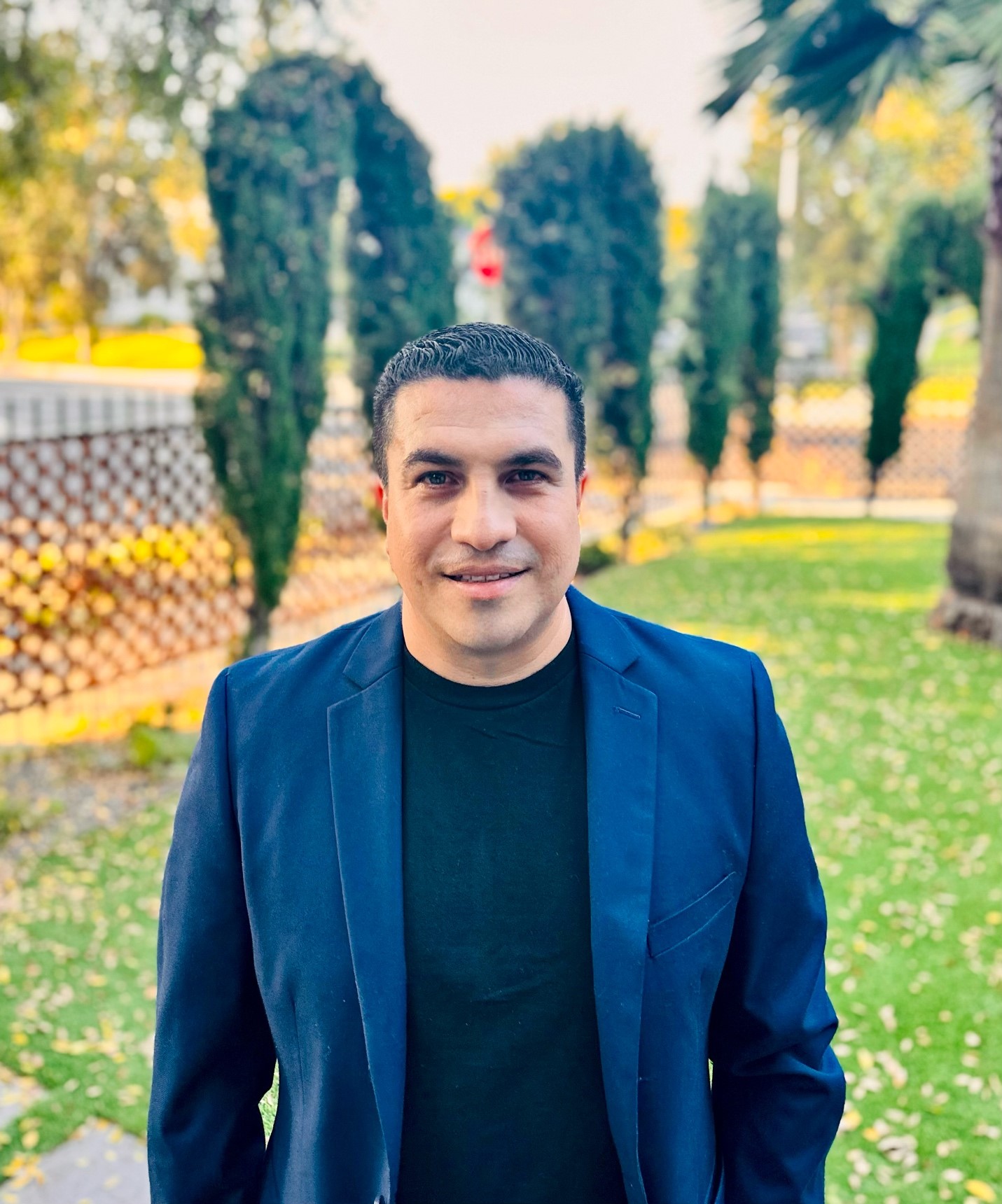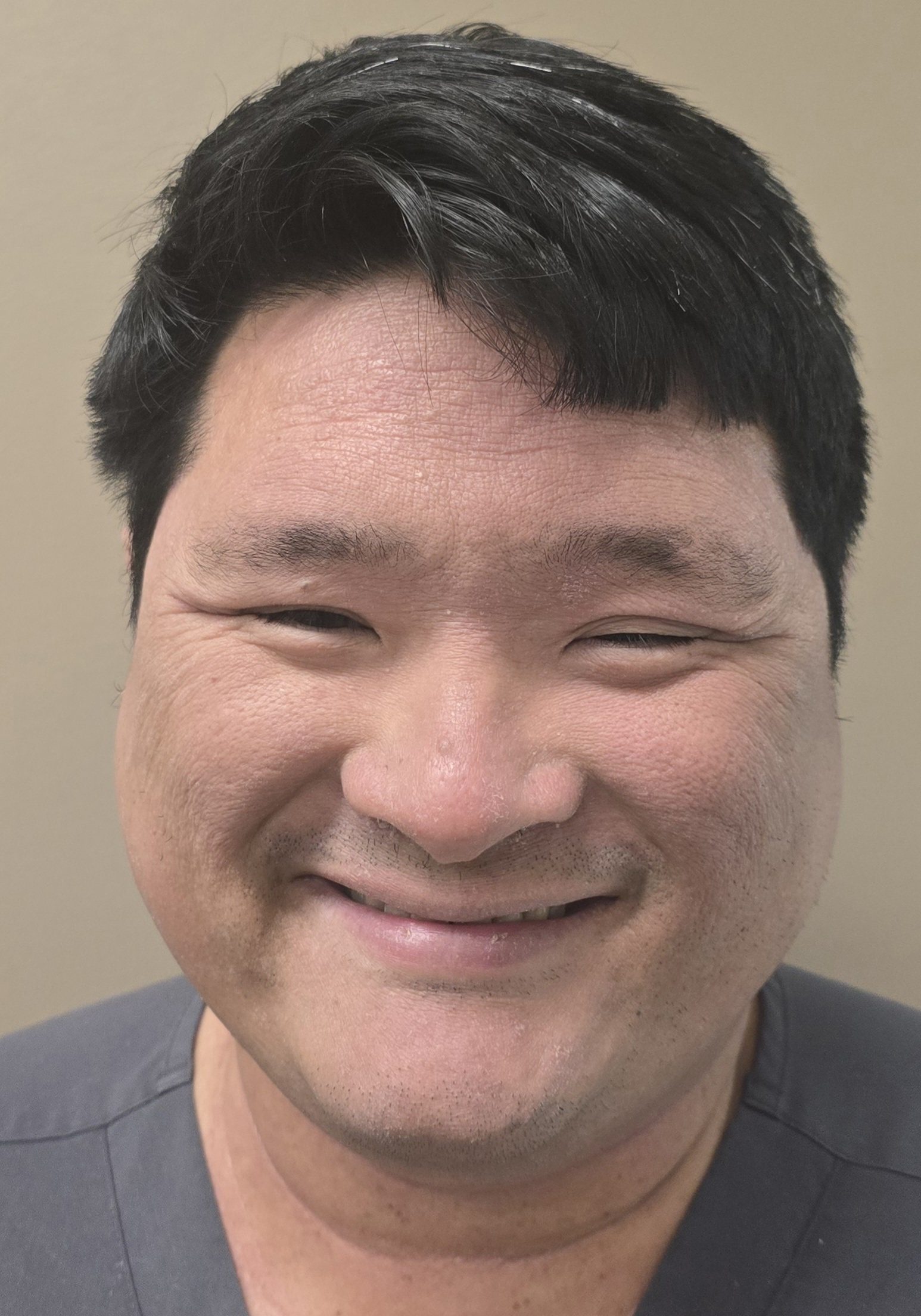LEVEL OF CARELEVEL OF CARE
Symptom Severity, functional impairment and vascular function Assessments
We utilize a comprehensive 6 dimensional questionnaire that evaluates PTSD Reaction Index, PGD, PERMA, and PNI Biomarkers to assess trauma and grief measures as well as encourage the development of resilience factors and positive coping skills for children and their families who may be experience complex trauma with grief reactions.
These assessments will give patients a score that provides clinicians and researchers a 6 dimensional picture of their unique mental health needs. This score report will include the patient’s trauma and grief reactivity, and underlying physiology to provide the most precise and well-rounded care based on individual patient needs. Vascular Function Biomarker (VFB) is used to monitor response to PTSD interventions. It is a dynamic reversible biomarker associated with the severity of reactivity to trauma reminders and increased major adverse cardiovascular events. Further, an increase in vascular function is directly related to reducing reactivity to trauma reminders, core PTSD symptoms, and improvement of inflammation. VFB is well-accepted and adopted in adolescents with PTSD with favorable outcomes.
This multidimensional approach ensures that we accurately identify the needs of each individual and provide appropriate interventions to support their mental health and wellbeing. Based on the on trauma symptom severity and the presence of functional impairment, youth will be assigned to one of four treatment interventions.
Measures For Our 6 Component Evaluation:
● The severity of post traumatic stress disorder (PTSD) symptoms is measured by the UCLA PTSD Brief Assessment Tool and UCLA Child/Adolescent PTSD Reaction Index for DSM-5
● The severity of prolonged grief disorder (PGD) symptoms is measured by the PGD Checklist for DSM-5TR
● The self-regulation flexibility is assessed by Resilience, PERMA-V, self-compassion, gratitude, grit, and VIA strength questionnaires
● The functional level is measured by an individual’s overall ability to perform activities of daily life (ADLs), overall functioning at home with 1st-degree family/significant other, overall functioning with peers, friends and extended family, and overall functioning at work and school.
● Psychosocial characteristics measure the quality of a social relationship, with a focus on high-quality connectedness, acceptance, conflict resolution, and commitment, which are the main components of overall positive social interactions.
● Socioeconomic repertoire measures individuals’ access to and limitations to care, a system in place for care, and thriving in the community.
Symptom Levels and Corresponding Biomarker Signatures
1. PTSD (Post-Traumatic Stress Disorder)
● No Symptoms (Level 0):
o Biomarkers: Preserved endothelial function & vascular reactivity, balanced autonomic nervous system (ANS) activity, and within normal limits of cortisol levels & inflammatory markers.
o Priming/Unpriming: Unprimed state. The body-mind system efficiently regulates neurovascular and neuromuscular function, maintains immune stability, and adapts to stress.
o Vascular Markers: Optimal nitric oxide (NO) production supports vasodilation and stable blood flow. Heart Rate Variability (HRV) is high, reflecting strong autonomic regulation. Reactive Hyperemia Index (RHI) remains preserved, supporting cardiovascular resilience. Within normal levels of CRP and IL-6 indicate
healthy vascular inflammation control.
o Sleep: Stable deep and REM sleep, strong polysomnography (PSG) markers, within normal limits of EEG activity, and no disruptions in actigraphy recordings.
o Sympathetic/Parasympathetic: Parasympathetic tone dominates, promoting relaxation and optimal stress recovery. Sympathetic activation is brief and
appropriate, responding only when necessary.
o Psychoneuroimmunology (PNI): Neuroendocrine balance is maintained, with no significant dysregulation in immunological or neuroimmune markers.
o Movement: Motor function is normal, with no hyperactivity, freezing, or startle reactivity abnormalities.
Explanation: Individuals without PTSD symptoms demonstrate optimal neurovascular regulation, balanced immune function, and stable autonomic control, promoting psychological resilience.
● Mild Symptoms (Level 1):
o Biomarkers: Mild decrease in endothelial function & vascular reactivity, Mild impairment of autonomic nervous system (ANS) activity, and slightly elevated cortisol levels & inflammatory markers. This is the reversible stage of primed traumatic stress injuries.
o Priming/Unpriming: Priming Stage 1: Early Activation. The body exhibits initial stress responses, but self-regulation remains mostly functional.
o Vascular Markers: NO production slightly reduced, leading to mild vascular homeostasis. CRP and IL-6 begin to rise, indicating early neurovascular inflammation. HRV slightly reduced, reflecting mild autonomic imbalance. RHI shows mild impairment, suggesting early endothelial dysfunction.
o Sleep: Mild sleep disturbances occur, including delayed sleep onset, light sleep, and occasional awakenings due to increased physiological arousal. Some individuals may experience sporadic nightmares.
o Sympathetic/Parasympathetic: Sympathetic activity is slightly heightened, leading to mild hypervigilance. Parasympathetic recovery remains mostly effective but slower, associated with mild impaired neuroplasticity.
o PNI: Subtle shifts in neuroendocrine markers, with minor alterations in immunological and neuroimmune markers.
o Movement: There is a temporary change in muscle tone and tension. Mild impairment of motor coordination and related mood regulation is noted.
Explanation: Mild PTSD symptoms correlate with early physiological dysregulation, including minor vascular and movement impairment, autonomic instability, and mild elevation of inflammatory markers but remain largely reversible.
● Moderate Symptoms (Level 2):
o Biomarkers: Moderate decrease in endothelial function & vascular reactivity, Moderate impairment of autonomic nervous system (ANS) activity, and significant elevated cortisol levels & inflammatory markers. This is a progression to the irreversible stage of primed traumatic stress injuries.
o Priming/Unpriming: Priming Stage 2: Persistent Activation. The body enters a sustained stress response, affecting cardiovascular, neuromuscular, immune, and neural functions.
o Vascular Markers: NO production is further reduced, with moderate impairment of vascular homeostasis. CRP and IL-6 are markedly elevated, increasing cardiovascular risk. HRV is significantly reduced, and RHI is moderately impaired with increased vascular dysfunction and inflammation.
o Sleep: Frequent awakenings recorded in PSG and actigraphy, EEG indicates hyperarousal, and REM sleep is reduced.
o Sympathetic/Parasympathetic: Sympathetic overactivation prolongs stress responses. Parasympathetic function is weakened, leading to chronic physiological stress states.
o PNI: Increased neuroimmune activation, altered gene expression markers, and epigenetic changes reflecting stress-related immune dysregulation.
o Movement: Heightened muscle tension, exaggerated reflexes, significant impairment of motor planning and coordination is noted at this stage.
Explanation: Moderate PTSD symptoms correlate with persistent vascular and ANS
dysfunction, chronic stress activation, dysfunctional movement and increased inflammation,
neural and cardiovascular impairments.
● Severe Symptoms (Level 3):
o Biomarkers: Severe decrease in endothelial function & vascular reactivity, Severe impairment of autonomic nervous system (ANS) activity, and profound elevated cortisol levels & inflammatory markers, and poor clinical outcomes. This is an irreversible stage of primed traumatic stress injuries.
o Priming/Unpriming: Priming Stage 3: Chronic Dysregulation. The body is in a maladaptive state, with profound vascular and autonomic dysfunction and sustained neural, muscular and vascular inflammation.
o Vascular Markers: NO levels are critically low, with severe impairment of vascular homeostasis. CRP and IL-6 remain substantially high in this chronic inflammation state. HRV is profoundly suppressed, and RHI is severely impaired with increased vascular dysfunction and inflammation
o Sleep: Severe sleep fragmentation, PSG shows chronic insomnia, EEG indicates disrupted slow-wave sleep, and actigraphy confirms restlessness.
o Sympathetic/Parasympathetic: Sympathetic dominance prevents the nervous system from transitioning to parasympathetic recovery. Chronic SNS activation fuels endothelial dysfunction, and neural inflammation.
o PNI: Dysfunctional neuroimmune signaling, altered genetic expression, and epigenetic modifications increase vulnerability to stress-related neurovascular dysregulation.
o Movement: Delayed motor responses, muscle weakness, profound impairment of motor planning and incoordination is noted at this stage.
Explanation: Severe PTSD symptoms result in sustained vascular and ANS dysfunction, increased risk of major adverse neural and cardiovascular events, severe dysfunctional movement and profound neuroimmune impairments.
2. PGD (Prolonged Grief Disorder)
● No Symptoms (Level 0):
o Biomarkers: Preserved endothelial function & vascular reactivity, balanced autonomic nervous system (ANS) activity, and within normal limits of cortisol levels & inflammatory markers.
o Biomarkers: Preserved endothelial function & vascular reactivity, balanced autonomic nervous system (ANS) activity, and within normal limits of cortisol levels & inflammatory markers.
o Priming/Unpriming: Unprimed state. The body-mind system efficiently regulates neurovascular and neuromuscular function, maintains immune stability, and adapts to stress.
o Vascular Markers: Optimal nitric oxide (NO) production supports vasodilation and stable blood flow. Heart Rate Variability (HRV) is high, reflecting strong autonomic regulation. Reactive Hyperemia Index (RHI) remains preserved, supporting cardiovascular resilience. Within normal levels of CRP and IL-6 indicate healthy vascular inflammation control.
o Sleep: Stable deep and REM sleep, strong polysomnography (PSG) markers, within normal limits of EEG activity, and no disruptions in actigraphy recordings.
o Sympathetic/Parasympathetic: Parasympathetic tone dominates, promoting relaxation and optimal stress recovery. Sympathetic activation is brief and appropriate, responding only when necessary.
o Psychoneuroimmunology (PNI): Neuroendocrine balance is maintained, with no significant dysregulation in immunological or neuroimmune markers.
o Movement: Motor function is normal, with no hyperactivity, freezing, or startle reactivity abnormalities.
Explanation: Healthy grief responses allow individuals to adapt without long-term physiological impairments.
● Mild Symptoms (Level 1):
o Biomarkers: Mild decrease in endothelial function & vascular reactivity, Mild impairment of autonomic nervous system (ANS) activity, and slightly elevated cortisol levels & inflammatory markers. This is the reversible stage of primed maladaptive bereavement injuries.
o Priming/Unpriming: Priming Stage 1: Early Activation. The body exhibits initial stress responses, but self-regulation remains mostly functional.
o Vascular Markers: NO production slightly reduced, leading to mild vascular homeostasis. CRP and IL-6 begin to rise, indicating early neurovascular inflammation. HRV slightly reduced, reflecting mild autonomic imbalance. RHI shows mild impairment, suggesting early endothelial dysfunction.
o Sleep: Mild sleep disturbances occur, including delayed sleep onset, light sleep, and occasional awakenings due to increased physiological arousal. Some individuals may experience sporadic nightmares.
o Sympathetic/Parasympathetic: Sympathetic activity is slightly heightened, leading to mild hypervigilance. Parasympathetic recovery remains mostly effective but slower, associated with mild impaired neuroplasticity.
o PNI: Subtle shifts in neuroendocrine markers, with minor alterations in immunological and neuroimmune markers.
o Movement: There is a temporary change in muscle tone and tension. Mild impairment of motor coordination and related mood regulation is noted.
Explanation: Mild maladaptive PGD symptoms of separation, existential and circumstantial distress correlate with early physiological dysregulation, mild vascular and movement
impairment, autonomic instability, and mild elevation of inflammatory markers but remain largely reversible
● Moderate Symptoms (Level 2):
o Biomarkers: Moderate decrease in endothelial function & vascular reactivity, Moderate impairment of autonomic nervous system (ANS) activity, and significant elevated cortisol levels & inflammatory markers. This is a progression to the irreversible stage of primed maladaptive bereavement injuries.
o Priming/Unpriming: Priming Stage 2: Persistent Activation. The body enters a sustained stress response, affecting cardiovascular, neuromuscular, immune, and neural functions.
o Vascular Markers: NO production is further reduced, with moderate impairment of vascular homeostasis. CRP and IL-6 are markedly elevated, increasing cardiovascular risk. HRV is significantly reduced, and RHI is moderately impaired with increased vascular dysfunction and inflammation.
o Sleep: Frequent awakenings recorded in PSG and actigraphy, EEG indicates hyperarousal, and REM sleep is reduced.
o Sympathetic/Parasympathetic: Sympathetic overactivation prolongs stress responses. Parasympathetic function is weakened, leading to chronic physiological stress states.
o PNI: Increased neuroimmune activation, altered gene expression markers, and epigenetic changes reflecting stress-related immune dysregulation.
o Movement: Heightened muscle tension, exaggerated reflexes, significant impairment of motor planning and coordination is noted at this stage.
Explanation: Moderate maladaptive PGD symptoms of separation, existential and circumstantial distress correlate with persistent vascular and ANS dysfunction, chronic stress activation, dysfunctional movement and increased inflammation, neural and cardiovascular impairments.
● Severe Symptoms (Level 3):
o Biomarkers: Severe decrease in endothelial function & vascular reactivity, Severe impairment of autonomic nervous system (ANS) activity, and profound elevated cortisol levels & inflammatory markers, and poor clinical outcomes. This is an irreversible stage of primed maladaptive bereavement injuries.
o Priming/Unpriming: Priming Stage 3: Chronic Dysregulation. The body is in a maladaptive state, with profound vascular and autonomic dysfunction and sustained neural, muscular and vascular inflammation.
o Vascular Markers: NO levels are critically low, with severe impairment of vascular homeostasis. CRP and IL-6 remain substantially high in this chronic inflammation state. HRV is profoundly suppressed, and RHI is severely impaired with increased vascular dysfunction and inflammation
o Sleep: Severe sleep fragmentation, PSG shows chronic insomnia, EEG indicates disrupted slow-wave sleep, and actigraphy confirms restlessness.
o Sympathetic/Parasympathetic: Sympathetic dominance prevents the nervous system from transitioning to parasympathetic recovery. Chronic SNS activation fuels endothelial dysfunction, and neural inflammation.
o PNI: Dysfunctional neuroimmune signaling, altered genetic expression, and epigenetic modifications increase vulnerability to stress-related neurovascular dysregulation.
o Movement: Delayed motor responses, muscle weakness, profound impairment of motor planning and incoordination is noted at this stage.
Explanation: Moderate maladaptive PGD symptoms of separation, existential and circumstantial distress correlate with sustained vascular and ANS dysfunction, increased risk of major adverse neural and cardiovascular events, severe dysfunctional movement and profound neuroimmune impairments.
3. Self-Regulation Flexibility
● Optimal (Level 0):
o Biomarkers: Preserved endothelial function & vascular reactivity, balanced ANS, within normal limits of cortisol levels & inflammatory markers, increased telomere length (cellular resilience).
o Priming/Unpriming: Unprimed state. The body efficiently adapts to stress, maintaining emotional stability, with optimal neuroplasticity and flexibility.
o Vascular Markers: Optimal nitric oxide (NO) production supports vasodilation and stable blood flow. Heart Rate Variability (HRV) is high, reflecting strong autonomic regulation. Reactive Hyperemia Index (RHI) remains preserved, supporting cardiovascular resilience. Within normal levels of CRP and IL-6 indicate healthy vascular inflammation control.
o Sleep: Stable deep and REM sleep, strong polysomnography (PSG) markers, within normal limits of EEG activity, and no disruptions in actigraphy recordings.
o Sympathetic/Parasympathetic: Parasympathetic tone dominates, promoting relaxation and optimal stress recovery. Sympathetic activation is brief and appropriate, responding only when necessary.
o Psychoneuroimmunology (PNI): Neuroendocrine balance is maintained, with no significant dysregulation in immunological or neuroimmune markers.
o Movement: Motor function is normal, with no hyperactivity, freezing, or startle reactivity abnormalities.
Explanation: Optimal self-regulation flexibility supports emotional stability, cognitive flexibility, and stress resilience.
● Reduced (Level 1):
o Biomarkers: Mild decrease in endothelial function & vascular reactivity, Mild impairment of autonomic nervous system (ANS) activity, and slightly elevated cortisol levels & inflammatory markers. This is a reversible stage of primed due mild impairment of self-regulation flexibility.
o Priming/Unpriming: Priming Stage 1: Early Activation. The body exhibits initial stress responses, but self-regulation remains mostly functional.
o Vascular Markers: NO production slightly reduced, leading to mild vascular homeostasis. CRP and IL-6 begin to rise, indicating early neurovascular inflammation. HRV slightly reduced, reflecting mild autonomic imbalance. RHI shows mild impairment, suggesting early endothelial dysfunction.
o Sleep: Mild sleep disturbances occur, including delayed sleep onset, light sleep, and occasional awakenings due to increased physiological arousal. Some individuals may experience sporadic nightmares.
o Sympathetic/Parasympathetic: Sympathetic activity is slightly heightened, leading to mild hypervigilance. Parasympathetic recovery remains mostly effective but slower, associated with mild impaired neuroplasticity.
o PNI: Subtle shifts in neuroendocrine markers, with minor alterations in immunological and neuroimmune markers.
o Movement: There is a temporary change in muscle tone and tension. Mild impairment of motor coordination and related mood regulation is noted.
Explanation: Stage 1 of impairment in self-regulation flexibility is associated with reduced resilience and neuroplasticity, but self-regulation remains largely intact.
● Impaired (Level 2):
o Biomarkers: Moderate decrease in endothelial function & vascular reactivity, Moderate impairment of autonomic nervous system (ANS) activity, and significant elevated cortisol levels & inflammatory markers. This is a progression to the irreversible stage of primed due moderate impairment of self-regulation flexibility.
o Priming/Unpriming: Priming Stage 2: Emotional inflexibility. Stress recovery is impaired, leading to chronic activation.
o Vascular Markers: NO production is further reduced, with moderate impairment of vascular homeostasis. CRP and IL-6 are markedly elevated, increasing cardiovascular risk. HRV is significantly reduced, and RHI is moderately impaired with increased vascular dysfunction and inflammation.
o Sleep: Frequent awakenings recorded in PSG and actigraphy, EEG indicates hyperarousal, and REM sleep is reduced.
o Sympathetic/Parasympathetic: Sympathetic overactivation prolongs stress responses. Parasympathetic function is weakened, leading to chronic physiological stress states.
o PNI: Increased neuroimmune activation, altered gene expression markers, and epigenetic changes reflecting stress-related immune dysregulation.
o Movement: Heightened muscle tension, exaggerated reflexes, significant impairment of motor planning and coordination is noted at this stage.
Explanation: Stage 2 of impairment in self-regulation flexibility is associated with substantial
reduction of resilience and neuroplasticity, leading to increased stress sensitivity and prolonged
distress.
● Profoundly Impaired (Level 3):
o Biomarkers: Severe decrease in endothelial function & vascular reactivity, Severe impairment of autonomic nervous system (ANS) activity, and profound elevated cortisol levels & inflammatory markers, and poor clinical outcomes. This is an irreversible stage of primed due severe impairment of self-regulation flexibility.
o Priming/Unpriming: Priming Stage 3: Chronic Dysregulation. The body is in a maladaptive state, with profound vascular and autonomic dysfunction and sustained neural, muscular and vascular inflammation.
o Vascular Markers: NO levels are critically low, with severe impairment of vascular homeostasis. CRP and IL-6 remain substantially high in this chronic inflammation state. HRV is profoundly suppressed, and RHI is severely impaired with increased vascular dysfunction and inflammation
o Sleep: Severe sleep fragmentation, PSG shows chronic insomnia, EEG indicates disrupted slow-wave sleep, and actigraphy confirms restlessness.
o Sympathetic/Parasympathetic: Sympathetic dominance prevents the nervous system from transitioning to parasympathetic recovery. Chronic SNS activation fuels endothelial dysfunction, and neural inflammation.
o PNI: Dysfunctional neuroimmune signaling, altered genetic expression, and epigenetic modifications increase vulnerability to stress-related neurovascular dysregulation.
o Movement: Delayed motor responses, muscle weakness, profound impairment of motor planning and coordination is noted at this stage.
Explanation: Stage 3 of impairment in self-regulation flexibility is associated with persistent emotional instability, profound reduction of resilience and neuroplasticity, increased cardiovascular and neural disorders.
4. Functional Impairment
● Optimal (Level 0):
o Biomarkers: Preserved endothelial function & vascular reactivity, balanced ANS, within normal limits of cortisol levels & inflammatory markers, increased telomere
length (cellular resilience)
o Priming/Unpriming: Unprimed state. The body efficiently adapts to stress, maintaining emotional stability, with optimal neuroplasticity and flexibility
○ Priming/Unpriming: Unprimed state. Functional systems operate efficiently, with adaptability to physical and emotional demands.
○ Vascular Markers: Balanced NO production, low CRP and IL-6, optimal HRV, Preserved RHI responses.
○ Sleep: Uninterrupted, high-quality sleep cycles; normal latency and efficiency on actigraphy; PSG confirms strong delta power and intact REM; no EEG signs of hyperarousal.
○ Sympathetic/Parasympathetic: Parasympathetic dominance ensures optimal recovery and energy regulation.
○ Psychoneuroimmunology: No significant neuroimmune or neuroendocrine abnormalities; healthy cortisol rhythm and low cytokine expression.
○ Movement: Normal motor coordination; no dysregulation or stress-induced abnormalities.
Explanation: Full functional capacity, with physical, cognitive, and emotional performance at
optimal levels.
● Reduced (Level 1):
○ Biomarkers: Mild decrease in endothelial function & vascular reactivity, Mild impairment of autonomic nervous system (ANS) activity, and slightly elevated cortisol levels & inflammatory markers.
○ Priming/Unpriming: Priming Stage 1: Early Functional Strain. Mild disruptions appear, but homeostasis is still preserved.
○ Vascular Markers: Slightly reduced NO levels, early CRP and IL-6 elevations, minor HRV suppression.
○ Sleep: Increased sleep latency, light sleep disruptions detected by actigraphy; PSG may show early REM instability and mild EEG beta elevations.
○ Sympathetic/Parasympathetic: Slight SNS activation begins to interfere with parasympathetic restoration.
○ Psychoneuroimmunology: Mild immune activation and cortisol variability; early epigenetic stress markers may emerge.
○ Movement: Occasional restlessness or tension-related hyperactivity; no major impairment.
Explanation: While daily activities are mostly maintained, early dysregulation may require compensatory effort and increase fatigue risk.
● Impaired (Level 2):
○ Biomarkers: Moderate decrease in endothelial function & vascular reactivity, Moderate impairment of autonomic nervous system (ANS) activity, and significant
elevated cortisol levels & inflammatory markers.
○ Priming/Unpriming: Priming Stage 2: Sustained Dysregulation. Systems show difficulty returning to baseline, leading to ongoing impairment.
○ Vascular Markers: Further NO reduction, worsening CRP/IL-6 levels, increasing RHI impairment.
○ Sleep: Frequent nighttime awakenings, reduced REM and deep sleep; actigraphy shows sleep fragmentation; PSG reveals increased beta activity and reduced delta waves; EEG shows alpha intrusions.
○ Sympathetic/Parasympathetic: SNS predominance disrupts autonomic flexibility, leading to fatigue and slower recovery.
○ Psychoneuroimmunology: Elevated cytokines (e.g., IL-6, TNF-α), cortisol/DHEA imbalance, and emerging glucocorticoid resistance.
○ Movement: More frequent motor freezing, exaggerated startle response, early signs of functional movement disorganization.
Explanation: Moderate functional impairment compromises performance across cognitive and
physical domains, creating barriers to independence.
● Profoundly Impaired (Level 3):
○ Biomarkers: Severe decrease in endothelial function & vascular reactivity, Severe impairment of autonomic nervous system (ANS) activity, and profound
elevated cortisol levels & inflammatory markers, and poor clinical outcomes.
○ Priming/Unpriming: Priming Stage 3: Chronic Functional Breakdown. Homeostatic recovery fails; chronic dysfunction becomes entrenched.
○ Vascular Markers: Critically low NO, high CRP and IL-6, irreversible endothelial damage, HRV collapse, severe RHI impairment.
○ Sleep: Chronic insomnia; PSG-confirmed REM fragmentation and alpha-delta anomalies; EEG shows sustained beta activity; actigraphy reflects extreme sleep variability.
○ Sympathetic/Parasympathetic: SNS hyperactivation overwhelms parasympathetic capacity, maintaining the body in a pathological state of vigilance.
○ Psychoneuroimmunology: Profound immune suppression and dysregulation, significant glucocorticoid resistance, hypermethylation of FKBP5 and disrupted gene expression.
○ Movement: Frequent motor freezing, functional movement disorder (FMD), tremors, dysregulated startle response, and sleep-related motor dysregulation.
Explanation: Severe impairment results in disability and systemic disease vulnerability, requiring comprehensive clinical intervention.
5. Psychosocial Characteristics
● Optimal (Level 0):
o Biomarkers: Preserved endothelial function & vascular reactivity, balanced autonomic nervous system (ANS) activity, increased oxytocin (social bonding), and within normal limits of cortisol levels & inflammatory markers, enhances social engagement and interactions.
o Priming/Unpriming: Unprimed state. Social connectedness fosters emotional stability and physiological balance.
o Vascular Markers: Optimal nitric oxide (NO) production, low CRP and IL-6, high HRV, preserved RHI.
o Sleep: Uninterrupted deep and REM sleep. Actigraphy, PSG, EEG confirm stable sleep architecture.
o Sympathetic/Parasympathetic: Parasympathetic tone dominates, promoting relaxation, trust, and social engagement. Sympathetic activation is brief and appropriate, responding only to real threats.
o PNI: Balanced neuroendocrine and immune function, with stable neuroimmune interactions.
o Movement: No abnormalities in motor control; smooth coordination.
Explanation: Strong social relationships enhance vagal tone, neuroplasticity and improved vascular function, reducing stress responses and cardiovascular risk.
● Reduced (Level 1):
o Biomarkers: Mild decrease in endothelial function & vascular reactivity, Mild impairment of autonomic nervous system (ANS) activity, impaired oxytocin (social bonding), and slightly elevated cortisol levels & inflammatory markers
o Priming/Unpriming: Priming Stage 1: Social Strain. Mild social challenges activate physiological stress responses, but recovery remains intact.
o Vascular Markers: Slight NO reduction, minor CRP/IL-6 elevations, early HRV suppression, mild RHI impairment.
o Sleep: Increased sleep onset latency, occasional awakenings on PSG.
o Sympathetic/Parasympathetic: Sympathetic activity is slightly heightened, leading to mild hypervigilance in social interactions. Parasympathetic recovery remains effective but slower.
o PNI: Early neuroimmune shifts, with minor epigenetic changes in stress-related gene expression.
o Movement: Sporadic motor restlessness or mild tension-related hyperactivity.
Explanation: Mild social stress increases SNS activity, leading to delayed stress recovery and
subtle vascular reactivity impairment.
● Impaired (Level 2):
o Biomarkers: Moderate decrease in endothelial function & vascular reactivity, Moderate impairment of autonomic nervous system (ANS) activity, significant impaired oxytocin (social bonding), and significant elevated cortisol levels & inflammatory markers.
o Priming/Unpriming: Priming Stage 2: Social Disconnection. Ongoing social stress results in chronic stress activation.
o Vascular Markers: Further NO decline, elevated CRP and IL-6, reduced HRV, RHI impairment reflecting endothelial stress.
o Sleep: Reduced deep sleep, frequent awakenings, increased sleep fragmentation.
o Sympathetic/Parasympathetic: Sympathetic overactivation prolongs stress responses. Parasympathetic function is weakened, leading to chronic physiological stress states.
o Psychoneuroimmunology: Heightened neuroimmune activation, increased vulnerability to neuroinflammatory conditions.
o Movement: Episodes of startle reflex hyperreactivity, increased motor tension.
Explanation: Persistent social distress shifts the nervous system into SNS dominance,
reducing social engagement and increasing cardiovascular risk.
● Profoundly Impaired (Level 3):
o Biomarkers: Severe decrease in endothelial function & vascular reactivity,
o Severe impairment of autonomic nervous system (ANS) activity, severe impaired oxytocin (social bonding), and profound elevated cortisol levels & inflammatory markers, and poor clinical outcomes.
o Priming/Unpriming: Priming Stage 3: Chronic Social Isolation. The body remains locked in a hyperactive stress response.
o Vascular Markers: Critically low NO levels, high CRP and IL-6, severe HRV suppression, irreversible RHI impairment.
o Sleep: Chronic insomnia, severe sleep fragmentation, hyperarousal on EEG.
o Sympathetic/Parasympathetic: Sympathetic dominance prevents the nervous system from transitioning to parasympathetic recovery. Chronic SNS activation fuels inflammation and emotional detachment.
o PNI: Profound neuroimmune dysregulation, long-term genetic and epigenetic alterations in stress-response pathways.
o Movement: Severe motor freezing, functional movement disorder episodes, heightened startle response.
Explanation: Prolonged social disconnection results in chronic SNS activation, emotional numbness, immune dysfunction, and increased disease vulnerability.
6. Socioeconomic Repertoire
● Optimal (Level 0):
o Biomarkers: Preserved endothelial function & vascular reactivity, balanced autonomic nervous system (ANS) activity, increased oxytocin (social bonding), and within normal limits of cortisol levels & inflammatory markers, increases access to healthcare and resources.
o Priming/Unpriming: Unprimed state. Socioeconomic stability promotes physiological and psychological well-being.
o Vascular Markers: Strong NO production, low CRP and IL-6, high HRV, stable RHI responses.
o Sleep: Stable and restorative sleep cycles, minimal disruptions.
o Sympathetic/Parasympathetic: Parasympathetic tone is dominant, allowing for optimal cognitive function and emotional regulation.
o PNI: No significant neuroimmune dysregulation, balanced neuroendocrine responses.
o Movement: Normal motor coordination, no signs of dysregulation.
Explanation: Adequate resources enhance physiological and emotional resilience, preventing
chronic stress responses.
● Reduced (Level 1):
o Biomarkers: Mild decrease in endothelial function & vascular reactivity, Mild impairment of autonomic nervous system (ANS) activity and slightly elevated cortisol levels & inflammatory markers.
o Priming/Unpriming: Priming Stage 1: Economic Strain. Mild financial stress begins to activate physiological stress pathways.
o Vascular Markers: Slight NO reduction, early increases in CRP and IL-6, minor HRV suppression.
o Sleep: Slightly increased sleep latency, occasional sleep fragmentation.
o Sympathetic/Parasympathetic: SNS activation is slightly heightened, slowing parasympathetic recovery.
o Psychoneuroimmunology: Mild immune activation, early epigenetic stress responses.
o Movement: Occasional motor restlessness or tension-related hyperactivity.
Explanation: Economic concerns increase stress responsivity, but adaptation remains possible.
● Impaired (Level 2):
o Biomarkers: Moderate decrease in endothelial function & vascular reactivity, Moderate impairment of autonomic nervous system (ANS) activity, and significant
elevated cortisol levels & inflammatory markers.
o Priming/Unpriming: Priming Stage 2: Economic Instability. Chronic financial stress contributes to persistent physiological stress responses.
o Vascular Markers: Further NO reduction, worsening CRP and IL-6, greater HRV suppression, moderate RHI impairment.
o Sleep: Increased sleep fragmentation, delayed sleep onset.
o Sympathetic/Parasympathetic: Chronic SNS activation disrupts recovery, weakening PNS function.
o PNI: Heightened immune dysregulation, increased vulnerability to metabolic and cardiovascular disease.
o Movement: More frequent motor freezing, startle reflex dysregulation.
Explanation: Limited resources prolong physiological stress activation, impairing immune function and increasing disease risk.
● Profoundly Impaired (Level 3):
o Biomarkers: Severe decrease in endothelial function & vascular reactivity, Severe impairment of autonomic nervous system (ANS) activity, and profound elevated cortisol levels & inflammatory markers, and poor clinical outcomes.
o Priming/Unpriming: Priming Stage 3: Economic Hardship. The nervous system remains locked in chronic stress, increasing mortality risk.
o Vascular Markers: Critically low NO, high CRP and IL-6, irreversible endothelial dysfunction, severe HRV suppression, extreme RHI impairment.
o Sleep: Chronic sleep deprivation, severe insomnia, PSG-confirmed sleep disruption.
o Sympathetic/Parasympathetic: SNS hyperactivation dominates, completely suppressing PNS recovery.
o PNI: Severe immune dysfunction, long-term stress-related epigenetic changes.
o Movement: Severe motor freezing, functional movement disorder, heightened startle response.
Explanation: Severe socioeconomic hardship leads to chronic SNS activation, accelerating
disease progression.









